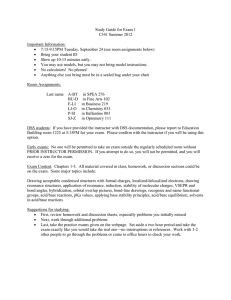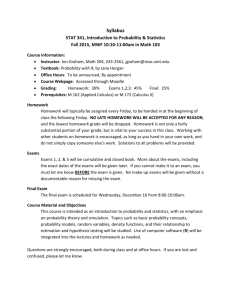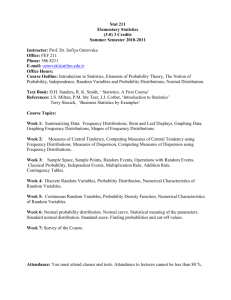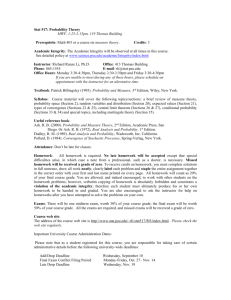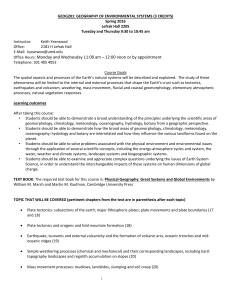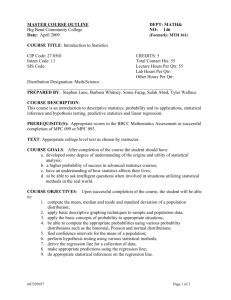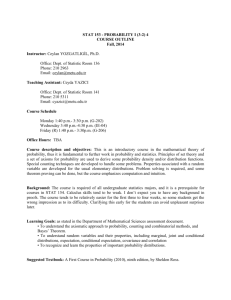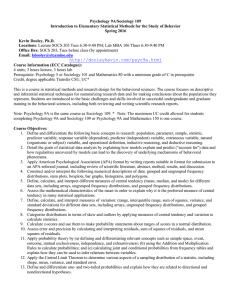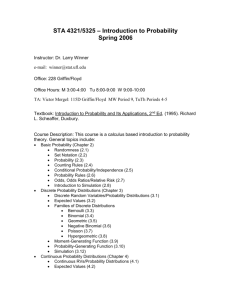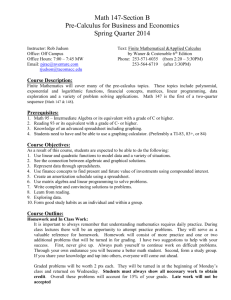MATH 542 Applied Linear Models
advertisement
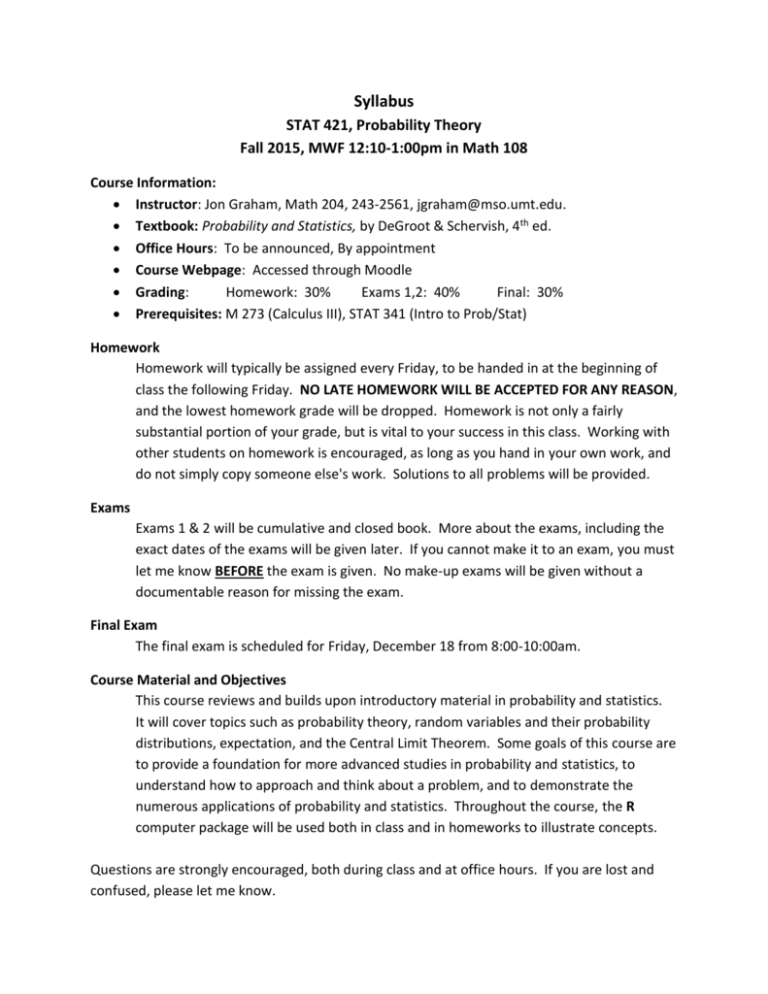
Syllabus STAT 421, Probability Theory Fall 2015, MWF 12:10-1:00pm in Math 108 Course Information: Instructor: Jon Graham, Math 204, 243-2561, jgraham@mso.umt.edu. Textbook: Probability and Statistics, by DeGroot & Schervish, 4th ed. Office Hours: To be announced, By appointment Course Webpage: Accessed through Moodle Grading: Homework: 30% Exams 1,2: 40% Final: 30% Prerequisites: M 273 (Calculus III), STAT 341 (Intro to Prob/Stat) Homework Homework will typically be assigned every Friday, to be handed in at the beginning of class the following Friday. NO LATE HOMEWORK WILL BE ACCEPTED FOR ANY REASON, and the lowest homework grade will be dropped. Homework is not only a fairly substantial portion of your grade, but is vital to your success in this class. Working with other students on homework is encouraged, as long as you hand in your own work, and do not simply copy someone else's work. Solutions to all problems will be provided. Exams Exams 1 & 2 will be cumulative and closed book. More about the exams, including the exact dates of the exams will be given later. If you cannot make it to an exam, you must let me know BEFORE the exam is given. No make-up exams will be given without a documentable reason for missing the exam. Final Exam The final exam is scheduled for Friday, December 18 from 8:00-10:00am. Course Material and Objectives This course reviews and builds upon introductory material in probability and statistics. It will cover topics such as probability theory, random variables and their probability distributions, expectation, and the Central Limit Theorem. Some goals of this course are to provide a foundation for more advanced studies in probability and statistics, to understand how to approach and think about a problem, and to demonstrate the numerous applications of probability and statistics. Throughout the course, the R computer package will be used both in class and in homeworks to illustrate concepts. Questions are strongly encouraged, both during class and at office hours. If you are lost and confused, please let me know. Important Dates Monday, September 7: Labor Day holiday Wednesday, September 9: last day to add courses by Cyberbear. Monday, September 21: Last day to drop courses/change grading option in Cyberbear. Monday, November 2: Last day to drop courses. Paper form must be signed by advisor and instructor. A W will appear on your transcript. After this date, drops can only be done by with the Dean’s signature. Wednesday, November 11: Veterans Day Wednesday, November 25 – Friday, November 27: Thanksgiving holiday Friday, December 11: Last day of class. Last day to change grading option (letter grade to CR/NCR or vice‐versa). Requires paper form signed by advisor and instructor. Learning Outcomes 1. To understand the axiomatic approach to probability, counting and combinatorial methods, and Bayes’ Theorem. 2. To understand random variables and their properties, including marginal and conditional distributions, expectation, conditional expectation, covariance and correlation, moment generating functions, and distributions of functions of one or more random variables. 3. To recognize and learn the properties of important probability distributions. 4. To understand the Law of Large Numbers and the Central Limit Theorem and their importance. 5. To gain the ability to prove results in probability. 6. To use statistical software to simulate random phenomena and to carry out probability computations for standard distributions. Disability Services The University of Montana assures equal access to instruction through collaboration between students with disabilities, instructors, and Disability Services for Students (DSS). If you think you may have a disability adversely affecting your academic performance, and you have not already registered with DSS, please contact DSS in Lommasson 154. We will work with you and DSS to provide an appropriate accommodation. Academic Honesty All students must practice academic honesty. Academic misconduct is subject to an academic penalty by the course instructor and/or a disciplinary action by the University. All students need to be familiar with the Student Conduct Code. You can find it in the A‐Z index on the UM home page.
